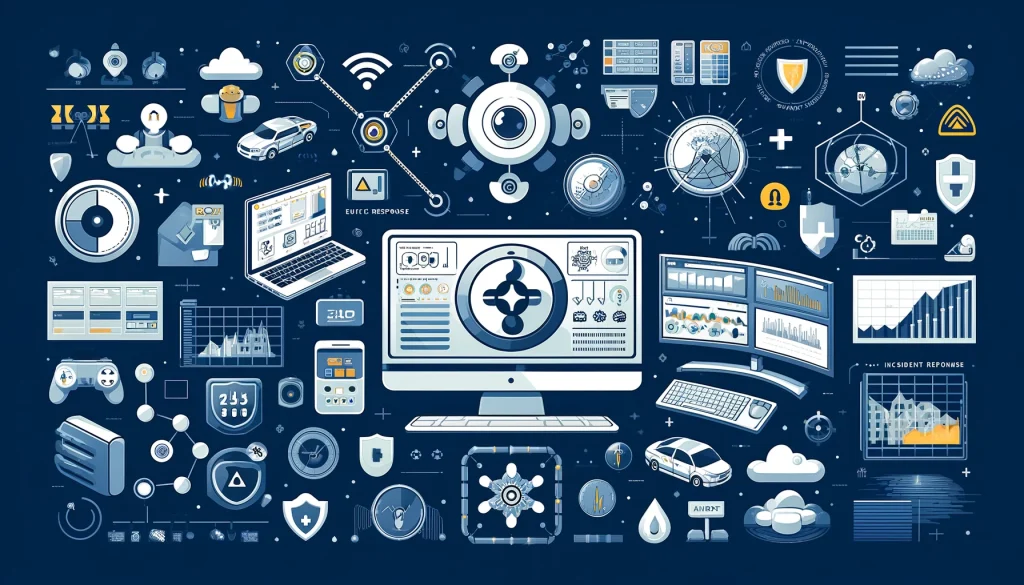System monitoring and incident response are critical components of cybersecurity practices aimed at detecting, mitigating, and responding to security incidents and threats targeting web applications and infrastructure. Here’s an overview of the process:
Web Monitoring:
Continuous Monitoring: Implement real-time monitoring solutions to continuously monitor web applications, servers, networks, and traffic for suspicious activities, anomalies, and security incidents.
Event Logging: Collect and centralize logs and event data from web servers, applications, firewalls, intrusion detection systems (IDS), and other security devices for analysis and correlation.
Security Information and Event Management (SIEM): Deploy SIEM platforms to aggregate, analyze, and correlate security events and alerts from various sources for threat detection and response.
Network Traffic Analysis: Use network traffic analysis tools to monitor inbound and outbound network traffic for signs of malicious activity, such as unauthorized access, data exfiltration, or malware communication.
User Behavior Monitoring: Monitor user behavior and access patterns to detect suspicious or unauthorized activities, such as multiple failed login attempts, privilege escalation, or unusual file access.
Application Performance Monitoring (APM): Monitor web application performance metrics, such as response times, latency, error rates, and resource utilization, to identify performance bottlenecks and anomalies that may indicate security incidents.
Incident Detection and Analysis:
Security Event Correlation: Correlate security events and alerts from multiple sources to identify patterns, trends, and indicators of compromise (IOCs) indicative of security incidents.
Threat Intelligence Integration: Incorporate threat intelligence feeds, indicators of compromise (IOCs), and security intelligence sources into monitoring and analysis processes to identify emerging threats and attack patterns.
Anomaly Detection: Use machine learning, behavioral analytics, and anomaly detection algorithms to identify deviations from normal behavior and baseline activity that may indicate security threats or intrusions.
Manual Review and Analysis: Conduct manual review and analysis of security events and alerts to validate findings, prioritize incidents, and determine appropriate response actions.
Incident Response:
Incident Identification: Quickly identify and categorize security incidents based on severity, impact, and urgency using predefined incident response procedures and criteria.
Incident Triage: Conduct initial triage of security incidents to assess the scope, impact, and potential risks associated with each incident and determine the appropriate response actions.
Containment and Mitigation: Take immediate containment and mitigation measures to prevent further spread of the incident, minimize damage, and restore normal operations.
Forensic Analysis: Conduct forensic analysis and investigation of security incidents to determine the root cause, extent of compromise, and potential impact on systems and data.
Communication and Reporting: Maintain clear and timely communication with stakeholders, including management, IT teams, legal counsel, and law enforcement, regarding incident response activities, status updates, and reporting requirements.
Documentation and Lessons Learned: Document incident response activities, findings, and lessons learned for post-incident analysis, improvement of incident response procedures, and prevention of future incidents.
Post-Incident Activities:
Remediation and Recovery: Implement remediation measures to address identified vulnerabilities, security gaps, and weaknesses that contributed to the incident and restore affected systems to a secure state.
Post-Incident Review: Conduct a post-incident review and analysis to evaluate the effectiveness of incident response actions, identify areas for improvement, and update incident response procedures and controls accordingly.
Security Awareness Training: Provide security awareness training to employees, IT staff, and stakeholders to raise awareness of security incidents, threats, and best practices for incident response and prevention.





